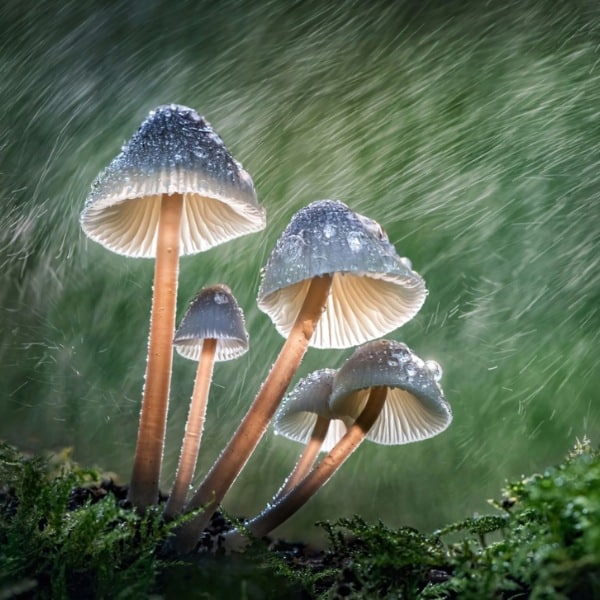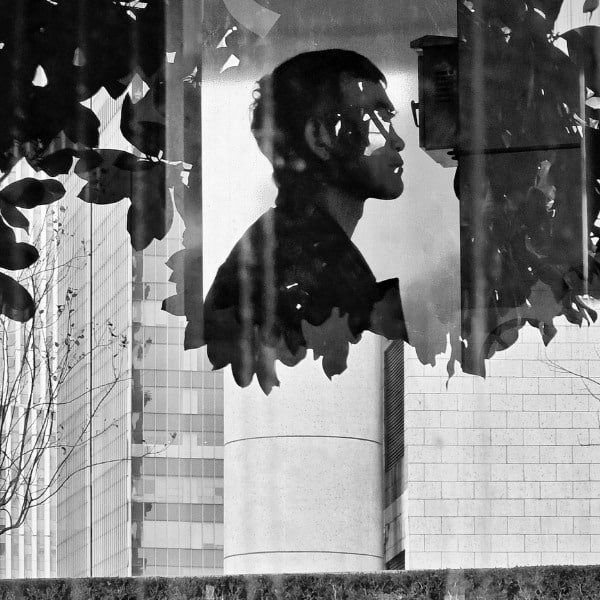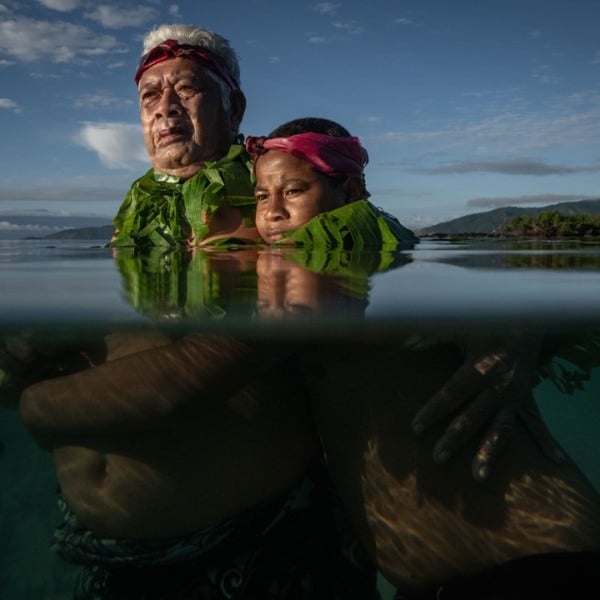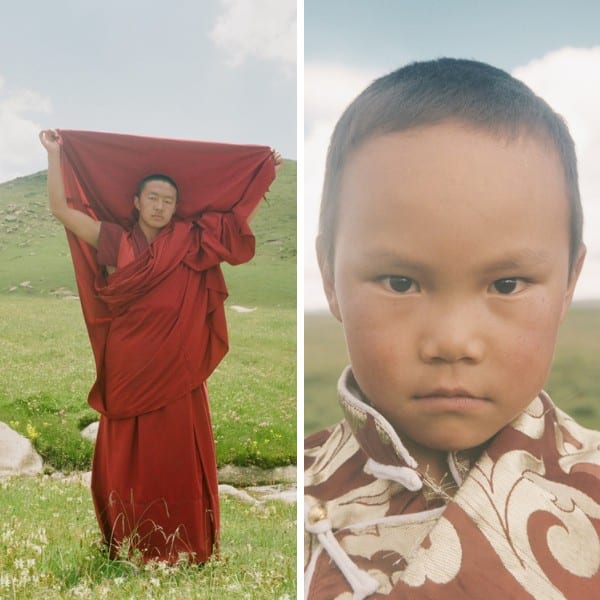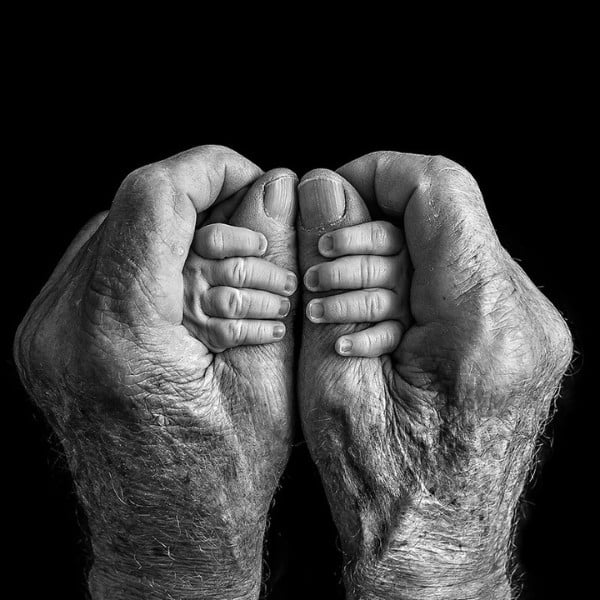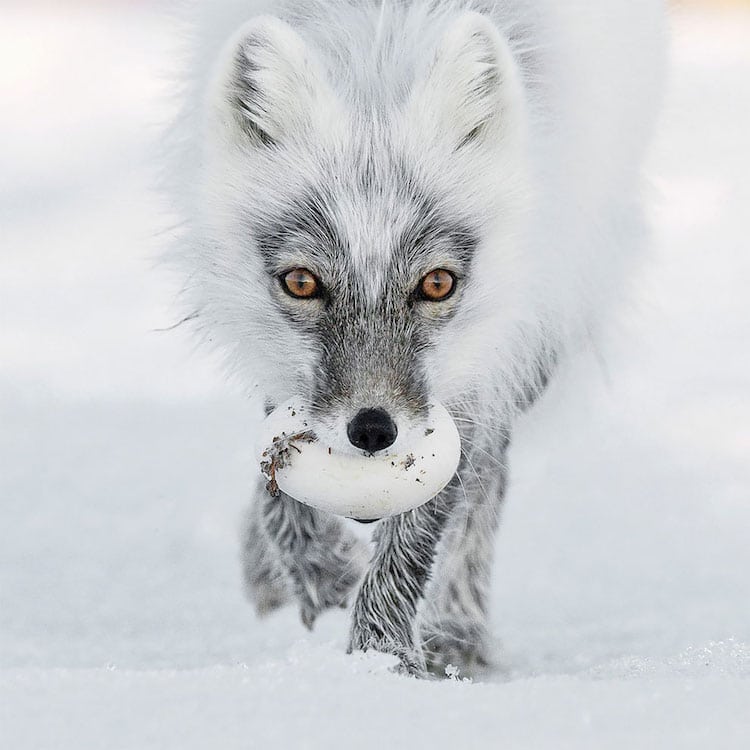
“Arctic treasure” Sergey Gorshkov (Russia). Finalist, Animal Portraits.
Carrying its trophy from a raid on a snow goose nest, an Arctic fox heads for a suitable burial spot. This is June and bonanza time for the foxes of Wrangel Island in the Russian Far East. Lemmings are the basic diet for Arctic foxes, but Wrangel suffers long, harsh winters and is icebound for much of the year, making it a permanent source of stored food for these opportunist animals. The food convoys arrive at the end of May. Over just a few days, vast flocks of snow geese descend on the tundra of this remote UNESCO World Heritage Site, traveling from wintering grounds some 4,800 kilometers (3,000 miles) away in British Columbia and California. Not only is this the biggest breeding colony of snow geese in the world, and the only remaining one in Asia, but it is also growing: from 160,000 geese in 2011 to about 300,000 by 2016. The Arctic foxes catch any weak or sick birds, but what they feast on are the goose eggs, laid in early June in open nests on the tundra. Though the pairs of snow geese actively defend their nests, a fox may still manage to steal up to 40 eggs a day, harassing the geese until there’s a chance to nip in and grab an egg. Most of the eggs are then cached, buried in shallow holes in the tundra, where the soil stays as cold as a refrigerator. These eggs will remain edible long after the brief Arctic summer is over and the geese have migrated south again. And when the new generation of young foxes begins to explore, they too will benefit from the hidden treasures.
(Photo: Sergey Gorshkov / Wildlife Photographer of the Year)
As we move closer to the awards ceremony for the 2017 Wildlife Photographer of the Year contest, the Natural History Museum, London has released select images of finalists. Coming from entries across 16 categories in the adult competition and 3 categories in the young competition, it's an exciting preview of what we can expect when the winning images are announced.
Now in its 53rd year, this year's competition received almost 50,000 entries from 92 different countries. As a reward for capturing the unique beauty of wildlife, winners receive a trip to the London awards ceremony, as well cash prizes of up to £10,000 (about $13,000). Finalists also get to participate in a traveling exhibition that tours galleries and museums around the world.
The contest attracts top wildlife photographers in the field, who strive to win the prestigious honor of Wildlife Photographer of the Year. In fact, last year's winner Tim Laman shared, “This is something I've dreamed about for at least 20 years probably—ever since I started submitting pictures to the competition. It's an amazing honor and I'm very excited.”
We look at some of the finalists from the 2017 Wildlife Photographer of the Year contest and learn the stories behind these breathtaking images.
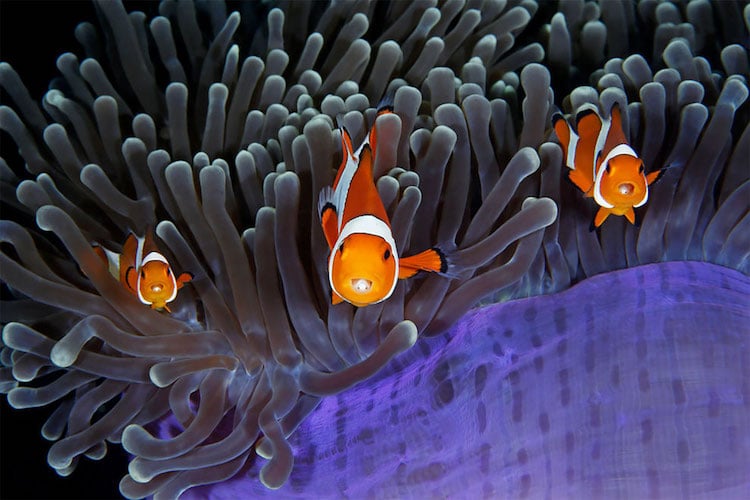
“The insiders” Qing Lin (China). Finalist, Under Water.
The bulbous tips of the aptly named magnificent anemone’s tentacles contain cells that sting most fish. But the clown anemonefish goes unharmed thanks to mucus secreted over its skin, which tricks the anemone into thinking it is brushing against itself. Both species benefit. The anemonefish gains protection from its predators, which daren’t risk being stung, and it also feeds on parasites and debris among the tentacles; at the same time, it improves water circulation (fanning its fins as it swims), scares away the anemone’s predators and may even lure in prey for it.
While diving in the Lembeh Strait in North Sulawesi, Indonesia, Qing noticed something strange about this particular cohabiting group. Each anemonefish had an extra pair of eyes inside its mouth – those of a parasitic isopod (a crustacean related to woodlice). An isopod enters a fish as a larva, via its gills, moves to the fish’s mouth and attaches with its legs to the base of the tongue. As the parasite sucks its host’s blood, the tongue withers, leaving the isopod attached in its place, where it may remain for several years. With great patience and a little luck—the fish darted around unpredictably—Qing captured these three rather curious individuals momentarily lined up, eyes front, mouths open and parasites peeping out.
(Photo: Qing Lin/2017 Wildlife Photographer of the Year)
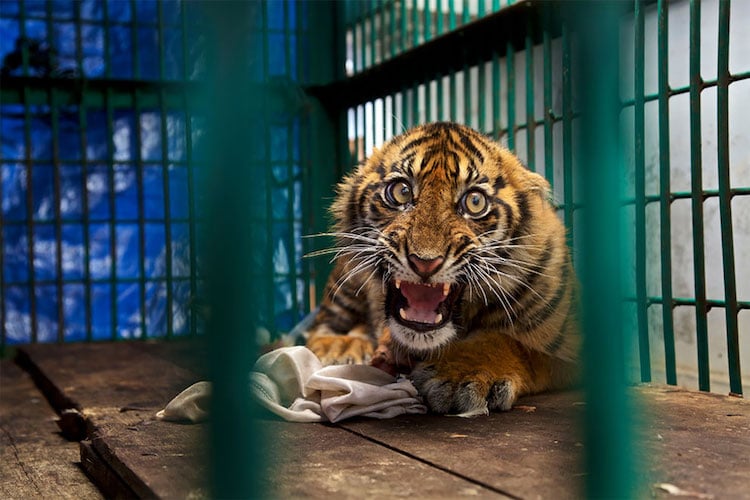
“Saved but caged” Steve Winter (US). Finalist, The Wildlife Photojournalist Award/ Single Image.
A back leg of this six-month-old Sumatran tiger cub was so badly mangled by a snare that it had to be amputated. He was lucky to survive at all, having been trapped for four days before being discovered in a rainforest in Aceh Province on the Indonesian island of Sumatra. The likelihood is that the snare was set by oil‐palm plantation workers to catch bushmeat (though tigers are also deliberately snared). The workers are migrants who have been given small plots to grow their own oil palms but who have to work on the big plantations for about five years until their own crops generate a return. To feed their families, they have to hunt, and this cub’s bones would have fetched a good price on the black market. The population of Sumatran tigers, a subspecies, is as low as 400–500 (the world population of all wild tigers is no more than 3,200)—the result of poaching to fuel the illegal trade in tiger parts for the Chinese-medicine market. Anti-poaching forest patrols are helping to stem the killing, partly by locating and removing snares (now illegal), which is how this cub came to be rescued. The cub, however, will spend the rest of his life in a cage in a Javan zoo. Today, there are probably more Sumatran tigers in zoos than there are left in the wild. (Photo: Steve Winter/2017 Wildlife Photographer of the Year)
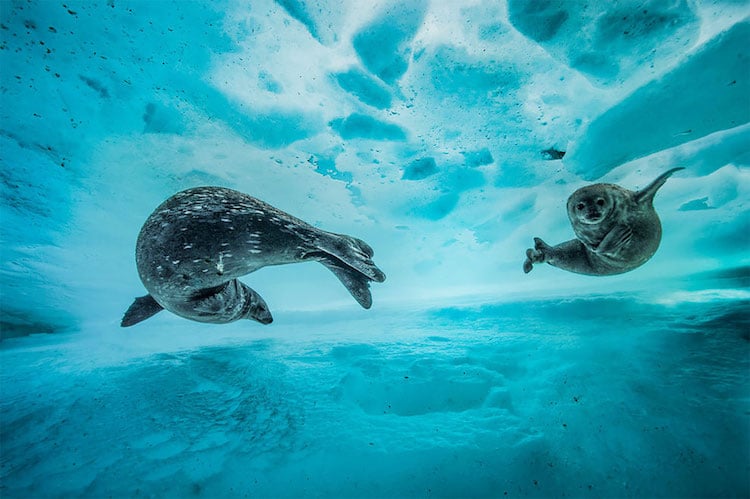
“Swim gym” Laurent Ballesta (France). Finalist, Behavior – Mammals.
“We were still a few meters from the surface when I heard the strange noises,” says Laurent. Suspecting Weddell seals – known for their repertoire of at least 34 different underwater call types – he approached slowly. It was early spring in east Antarctica, and a mother was introducing her pup to the icy water.
The world’s most southerly breeding mammal, a Weddell seal gives birth on the ice and takes her pup swimming after a week or two. The pair, unbothered by Laurent’s presence, slid effortlessly between the sheets of the frozen labyrinth. Adults are accomplished divers, reaching depths of more than 600 meters (1,970 feet) and submerging for up to 82 minutes. “They looked so at ease, where I felt so inappropriate,” says Laurent. Relying on light through the ice above, he captured the curious gaze of the pup, the arc of its body mirroring that of its watchful mother.
(Photo: Laurent Ballesta/2017 Wildlife Photographer of the Year)

“Romance among the angels” Andrey Narchuk (Russia). Finalist, Behavior / Invertebrates.
Andrey was on an expedition to the Sea of Okhotsk in the Russian Far East, and his intention on this day was to photograph salmon. But as soon as he jumped into the water, he found himself surrounded by thousands of mating sea angels. Quickly swapping to his macro equipment, he began photographing the pairs, 3 centimeters (11⁄4 inches) long and swirling around in the current. Sea angels are mollusks related to slugs and snails, without shells and with wing-like lobes used as swimming paddles. They hunt sea butterflies – swimming sea snails – using specialized feeding parts to prise them from their shells. Each individual is both male and female, and here they are getting ready to insert their copulatory organs into each other to transfer sperm in synchrony. One is slightly smaller than the other, as was the case with most of the couples Andrey observed, and they remained joined for 20 minutes. Both would go on to lay 30–40 tiny eggs after fertilization. It was late summer and peak phytoplankton time, so there would be abundant food for the resulting larvae.
To photograph them mating, Andrey had to battle against strong currents and avoid a wall of gill netting, and when he was swept into the net and his equipment became snared, he was forced to make an emergency ascent – but not before he had got his shot. The following day, there wasn’t a single angel to be seen.
(Photo: Andrey Narchuk/2017 Wildlife Photographer of the Year)
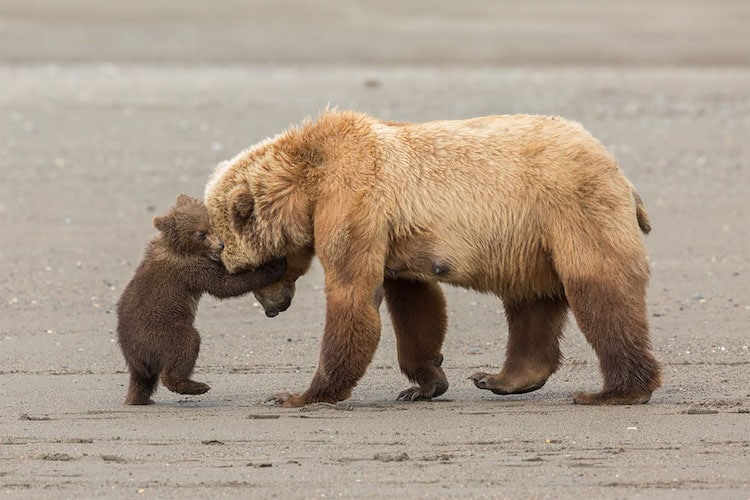
“Bear hug” Ashleigh Scully (US). Finalist, Young Wildlife Photographer of the Year, 11-14 Years.
After fishing for clams at low tide, this mother brown bear was leading her young spring cubs back across the beach to the nearby meadow. But one young cub just wanted to stay and play. It was the moment Ashleigh had been waiting for. She had come to Alaska’s Lake Clark National Park intent on photographing the family life of brown bears. This rich estuary environment provides a buffet for bears: grasses in the meadows, salmon in the river and clams on the shore. A large number of families spend their summers here, and with plentiful food, they are tolerant of each other (though wary of males) and of people. ‘I fell in love with brown bears,’ says Ashleigh, ‘and their personalities… This young cub seemed to think that it was big enough to wrestle mum to the sand. As always, she played along, firm, but patient.’ The result is a cameo of brown bear family life. (Photo: Ashleigh Scully/2017 Wildlife Photographer of the Year)
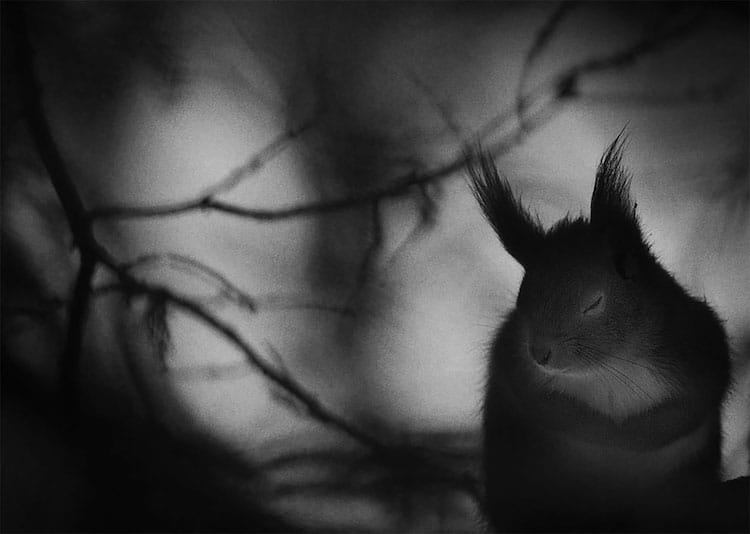
“Winter pause” Mats Andersson (Sweden). Finalist, Black and white.
The red squirrel closed its eyes for just a moment, paws together, fur fluffed, then resumed its search for food. Winter is a tough time for northern animals. Some hibernate to escape its rigors, but not red squirrels. Mats walks every day in the forest near his home in southern Sweden, often stopping to watch the squirrels foraging in the spruce trees. Though their mainly vegetarian diet is varied, their winter survival is linked to a good crop of spruce cones, and they favor woodland with conifers. They also store food to help see them through lean times. On this cold, February morning, the squirrel’s demeanor encapsulated the spirit of winter, captured by Mats using the soft-light grain of black and white.
(Photo: Mats Andersson/2017 Wildlife Photographer of the Year)
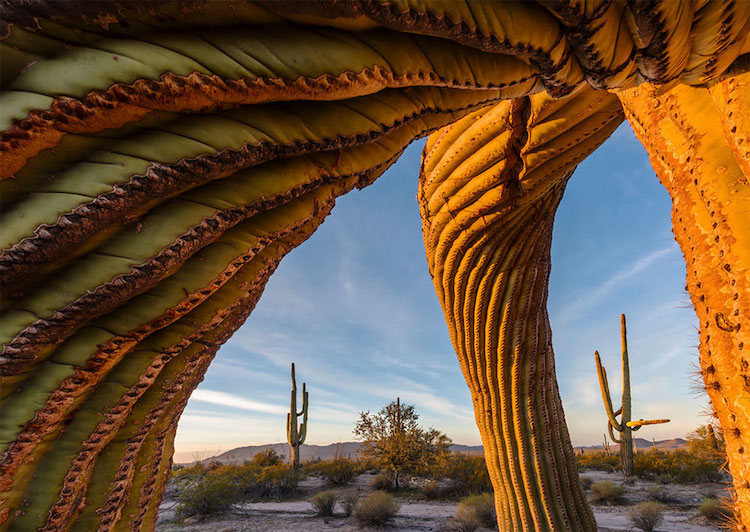
“Saguaro twist” Jack Dykinga (US). Finalist, Plants and Fungi.
A band of ancient giants commands the expansive arid landscape of Arizona’s Sonoran Desert National Monument in the US. These emblematic saguaro cacti—up to 200 years old —may tower at more than 12 meters (40 feet) but are very slow growing, some sprouting upwardly curved branches as they mature. The roots —aside from one deep tap— weave a maze just below the surface, radiating as far as the plant is tall, to absorb precious rainfall. Most water is stored in sponge-like tissue, defended by hard external spines and a waxy-coated skin to reduce water loss. The surface pleats expand like accordions as the cactus swells, its burgeoning weight supported by woody ribs running along the folds. But the saturated limbs are vulnerable to hard frost – their flesh may freeze and crack, while the mighty arms twist down under their loads. A lifetime of searching out victims near his desert home led Jack to know several that promised interesting compositions. ‘This one allowed me to get right inside its limbs,’ he says. As the gentle dawn light bathed the saguaro’s contorted form, Jack’s wide angle revealed its furrowed arms, perfectly framing its neighbors before the distant Sand Tank Mountains. (Photo by Jack Dykinga/2017 Wildlife Photographer of the Year)
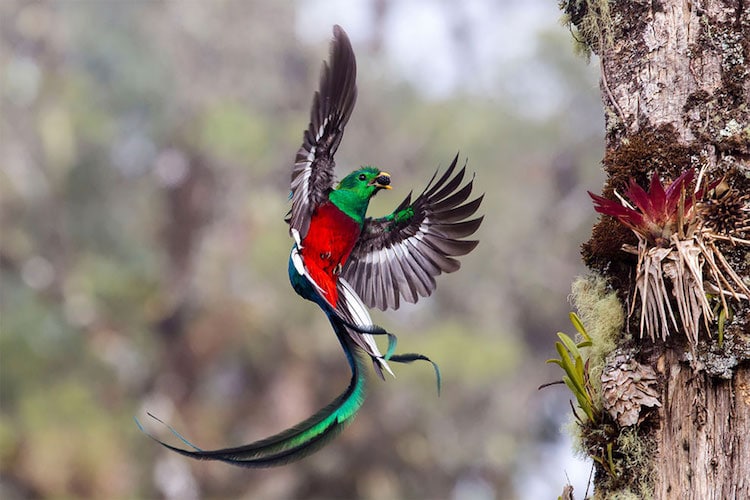
“Resplendent delivery” Tyohar Kastiel (Israel). Finalist, Behavior/Birds.
Tyohar watched the pair of resplendent quetzals from dawn to dusk for more than a week as they delivered fruits and the occasional insect or lizard to their two chicks. Resplendent quetzals usually nest in thicker forest, but this pair had picked a tree in a partly logged area in the Costa Rican cloud forest of San Gerardo de Dota. The additional light made it easier for Tyohar to catch the iridescent color of the male’s dazzling emerald and crimson body plumage and tail streamers, despite his fast, erratic flight pattern. But the light also made it easier for the birds to see Tyohar. So he would arrive before dawn, sit in the same place and wear the same jacket, with the result that the pair accepted his presence and continued to stuff food into their chicks’ beaks every hour or so.
On the eighth day, the parents fed the chicks at dawn as usual but then didn’t return for several hours. By 10 am, the chicks were calling ravenously, and Tyohar began to worry. Then something wonderful happened. The male arrived with a wild avocado in his beak. He landed on a nearby branch, scanned around, and then flew to the nest. But instead of feeding the chicks, he flew back to his branch, the avocado still in his beak. Within seconds, one chick hopped out to the nearest perch and was rewarded. Moments later the female appeared and did exactly the same thing, and the second chick jumped out. The family then flew off together into the rainforest, leaving Tyohar bereft—and thrilled. (Photo: Tyohar Kastiel/2017 Wildlife Photographer of the Year)

“The power of the matriarch” David Lloyd (New Zealand/UK). Finalist, Animal Portraits.
At dusk, in Kenya’s Maasai Mara National Reserve, David waited for the herd of elephants on their evening trek to a waterhole. As they got closer to his vehicle, he could see that the mellow light from the fast-setting sun was emphasizing every wrinkle and hair. For a photographer who enjoys working with texture, this was a gift. When they were just a few meters away, he could see the different qualities of different parts of their bodies – the deep ridges of their trunks, the mud-caked ears and the patina of dried dirt on their tusks.
The elephants ambled by in near silence, peaceful and relaxed. The female leading the dozen-strong herd—probably the matriarch—looked straight at him, her eye a glowing amber dot in the heavy folds of skin. Her gaze was, he says, full of respect and intelligence—the essence of sentience. (Photo: David Lloyd/2017 Wildlife Photographer of the Year)
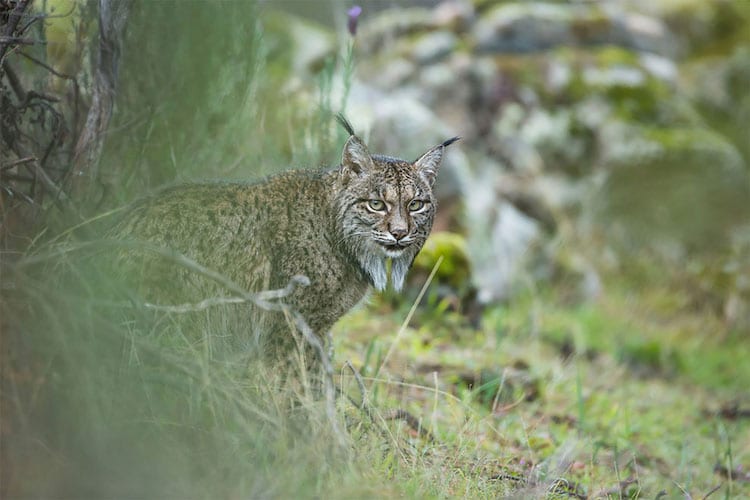
“Glimpse of a lynx” Laura Albiac Vilas (Spain). Finalist, Young Wildlife Photographer of the Year, 11-14 Years.
Laura had seen many of Spain’s wild animals, but never the elusive Iberian lynx, an endangered cat found only in two small populations in southern Spain. Unlike the larger European lynx, the Iberian lynx feeds almost entirely on rabbits. So a disease that wipes out the rabbit population can be catastrophic. They also need a particular blend of open scrub and natural cavities for natal dens. Laura’s family traveled to the Sierra de Andújar Natural Park in search of the lynx – and struck lucky on their second day – a pair were relaxing not far from the road. There were many photographers there but an atmosphere of ‘respect’. Laura watched for an hour and a half, the only sound being the whirr of cameras if a cat glanced in their direction. ‘The animals’ attitude surprised me. They weren’t scared of people—they simply ignored us,’ says Laura. ‘I felt so emotional to be so close to them.’ (Photo: Laura Albiac Vilas/2017 Wildlife Photographer of the Year)
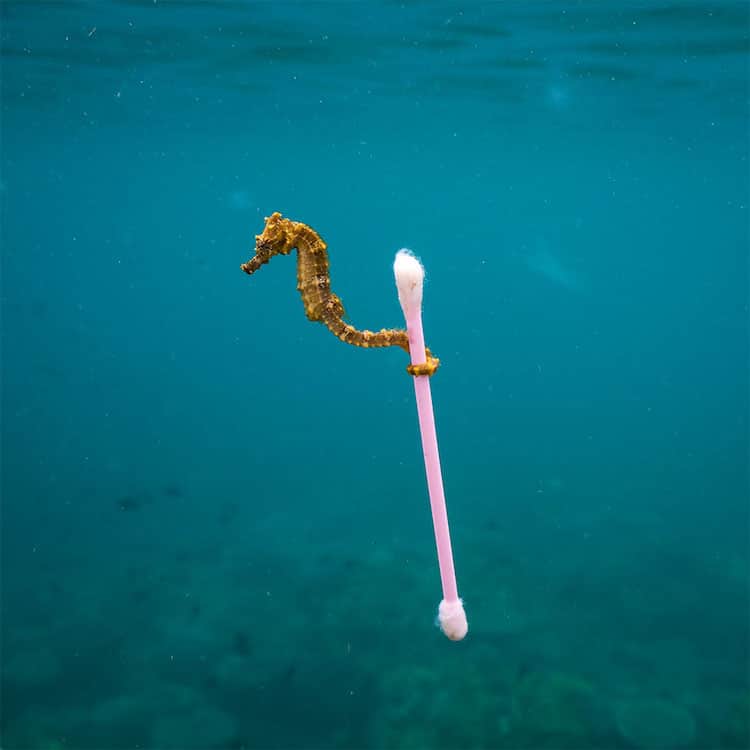
“Sewage surfer” Justin Hofman (US). Finalist, The Wildlife Photojournalist Award/ Single Image.
Seahorses hitch rides on the currents by grabbing floating objects such as seaweed with their delicate prehensile tails. Justin watched with delight as this tiny estuary seahorse ‘almost hopped’ from one bit of bouncing natural debris to the next, bobbing around near the surface on a reef near Sumbawa Island, Indonesia. But as the tide started to come in, the mood changed. The water contained more and more decidedly unnatural objects – mainly bits of plastic – and a film of sewage sludge covered the surface, all sluicing towards the shore.
The seahorse let go of a piece of seagrass and seized a long, wispy piece of clear plastic. As a brisk wind at the surface picked up, making conditions bumpier, the seahorse took advantage of something that offered a more stable raft: a waterlogged plastic cottonbud. Not having a macro lens for the shot ended up being fortuitous, both because of the strengthening current and because it meant that Justin decided to frame the whole scene, sewage bits and all. As Justin, the seahorse and the cottonbud spun through the ocean together, waves splashed into Justin’s snorkel. The next day, he fell ill. Indonesia has the world’s highest levels of marine biodiversity but is second only to China as a contributor to marine plastic debris – debris forecast to outweigh fish in the ocean by 2050. On the other hand, Indonesia has pledged to reduce by 70 per cent the amount of waste it discharges into the ocean. (Photo: Justin Hofman/2017 Wildlife Photographer of the Year)
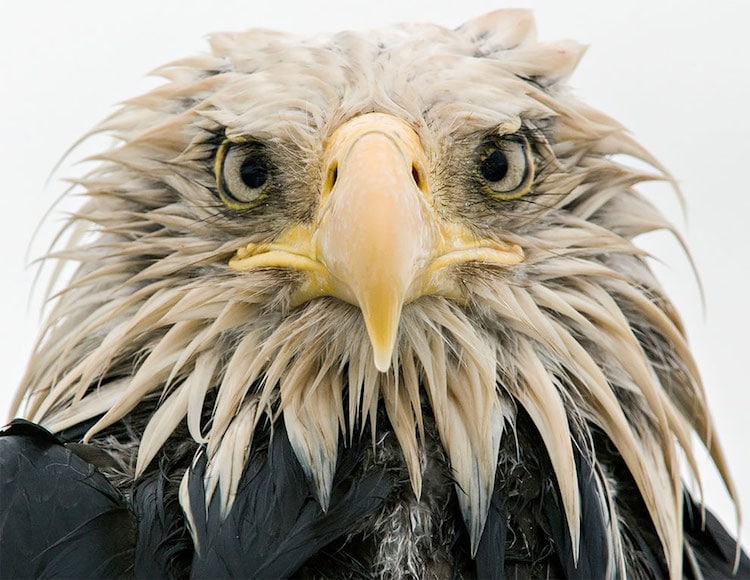
“Bold eagle” Klaus Nigge (Germany). Finalist, Animal Portraits.
After several days of constant rain, the bald eagle was soaked to the skin. Named after its conspicuous but fully-feathered white head (bald derives from an old word for white), it is an opportunist, eating various prey – captured, scavenged or stolen – with a preference for fish. At Dutch Harbor on Amaknak Island in Alaska, USA, bald eagles gather to take advantage of the fishing industry’s leftovers. Used to people, the birds are bold. ‘I lay on my belly on the beach surrounded by eagles,’ says Klaus. ‘I got to know individuals, and they got to trust me.’
The species was declining dramatically until the 1960s, but reduced persecution, habitat protection, and a ban on the pesticide DDT have led to its recovery. Some threats persist, including lead poisoning – US prohibition on lead ammunition (which ends up in animals the birds eat) has recently been overturned. ‘As the eagle edged nearer, picking up scraps, I lowered my head,’ says Klaus, ‘looking through the camera to avoid direct eye contact.’ It came so close that it towered over him. His low perspective and simple composition, allowing full concentration on the eagle’s expression, created an intimate portrait, enhanced by the overcast light of the rainy day. (Photo: Klaus Nigge/2017 Wildlife Photographer of the Year)
Wildlife Photographer of the Year: Website | Facebook
h/t: [Peta Pixel, design you trust]
Related Articles:
Stunning Winners of the 2017 Bird Photographer of the Year Contest
Incredible Photography by the Invisible Wildlife Photographer
Hilarious Early Entries From the 2016 Comedy Wildlife Photography Awards
Stunning Finalists of the 2016 Wildlife Photographer of the Year Contest













































































